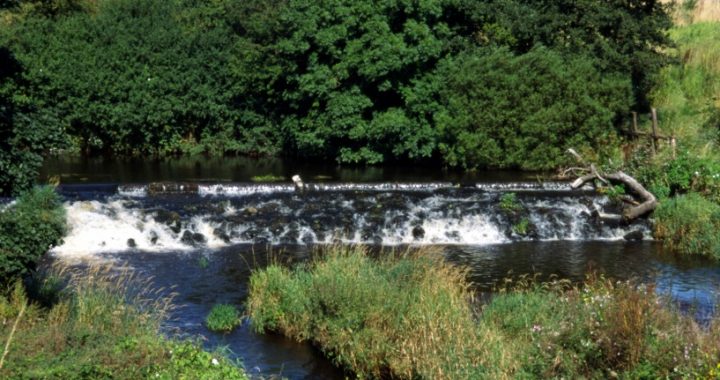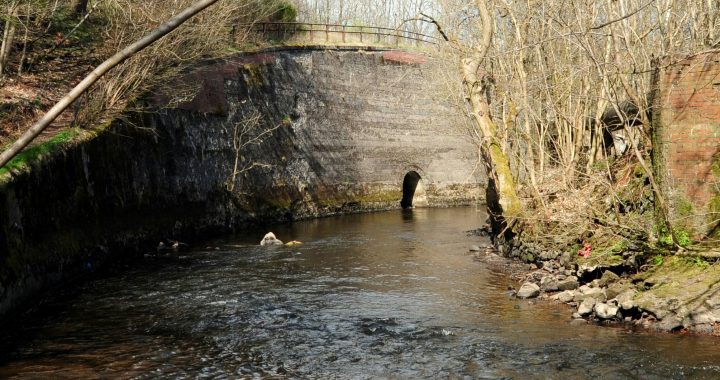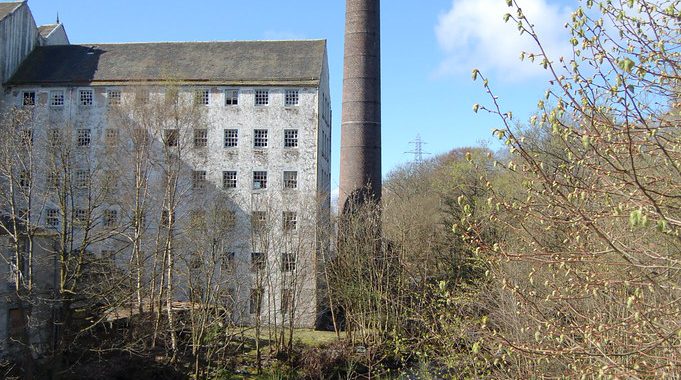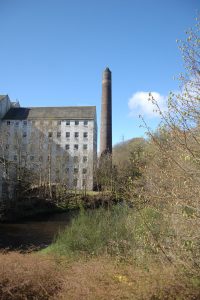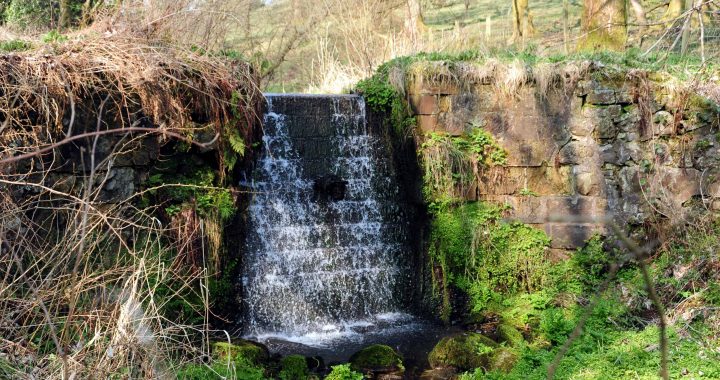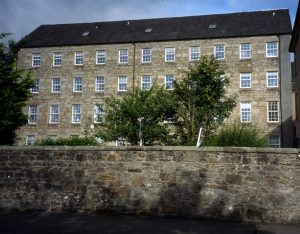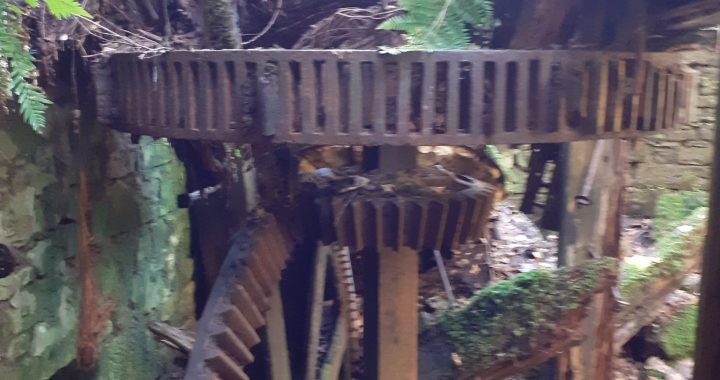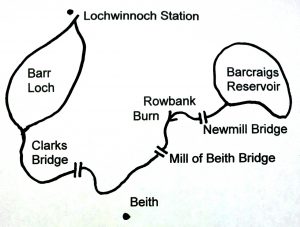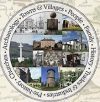A short distance downstream from Johnstone, the Old Patrick Water enters the Cart. This burn powered Elderslie Cotton Mill, two grain mills (Elderslie and Mackies Mill), a paper mill, printworks (Patrickbank), and a distillery at Glenpatrick.
On the Black Cart itself, one of the oldest mills on the river was the Mill of Cart, a medieval grain mill. Its rubble dam still survives just downstream of where the cycle path crosses the Cart. (See image above.) The dam was later, via an extended lade, used to power Linwood Cotton Mill.
Linwood Cotton Mill was built in 1792 by James Dunlop, who already owned Gateside Cotton Mill in Neilston Parish. Linwood Mill was, for a time, the largest mill in Britain. From the 1790s, the parish records document children born to the mill workers. Apart from the cotton spinners documented in the records, occupations at the mill included clockmakers, turners, brassfounders and wrights, all of whom built and maintained the mill machinery
Like many cotton mills, Linwood mill was burned down, and was later rebuilt. In an 1804 advert, only one of its six stories remained standing, plus a large water wheel, 14 feet diameter and 12 feet wide. The mill was then rebuilt. At this point on the Black Cart, so far down the river, the bottom of the waterwheel could be swamped at high tide, and a smaller, higher water wheel had to be used.
Beside the big cotton mill there was also a small thread bleachfield. Further down the river at Middleton there was a much bigger thread bleachfield, started by James Smith by 1782.
Less well known is Linwood’s second cotton mill. Henderson’s Mill was built shortly after the big mill, but with only a tenth of the big mill’s 400 workers. Both mills latterly changed to paper making.
© 2017 Stuart Nisbet, Renfrewshire Local History Forum

